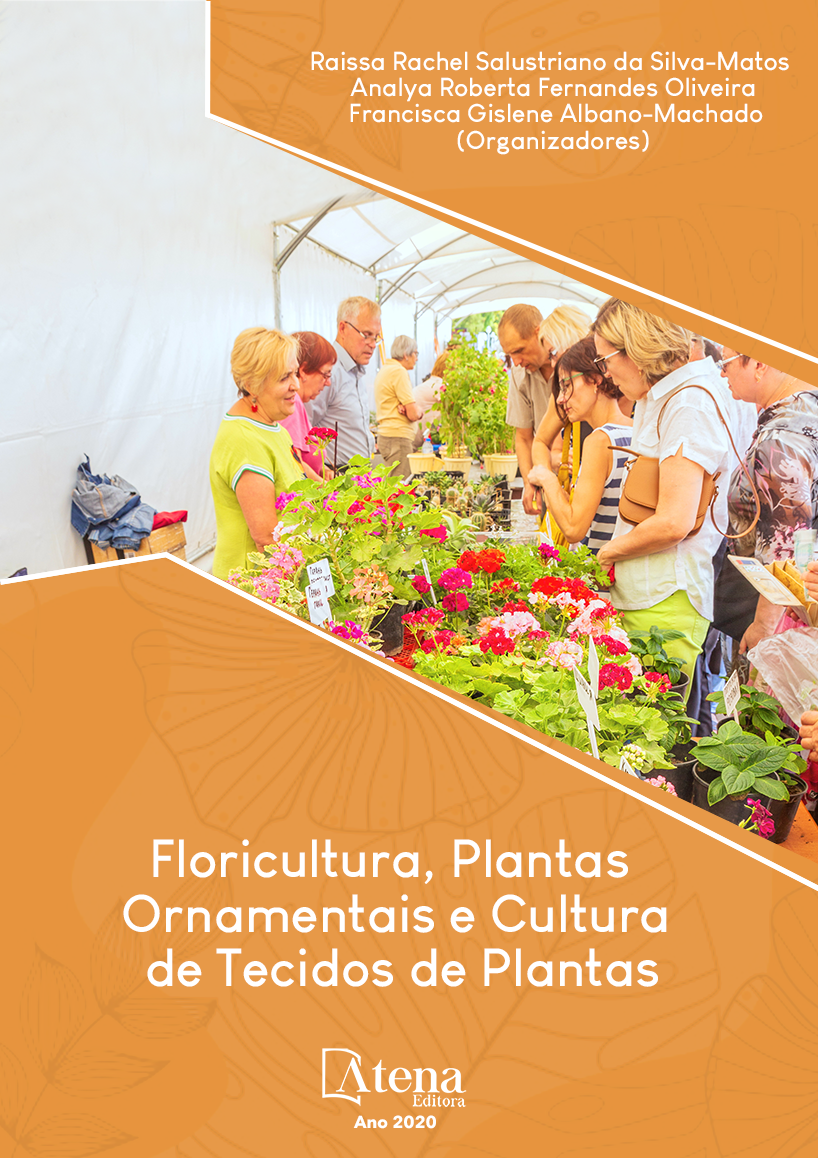
INDUÇÃO DE CALOS EM SEGMENTOS NODAIS DE Leucaena leucocephala (FABACEAE) E AVALIAÇÃO DOS TEORES DE FENÓIS E FLAVONÓIDES TOTAIS
A cultura de calos é uma técnica de
cultivo que possibilita a obtenção de compostos
bioativos in vitro. Este estudo teve como
objetivos induzir calos em segmentos nodais de
Leucaena leucocephala, estabelecer a curva
de crescimento de calos e avaliar os teores de
fenóis e flavonoides totais. Explantes nodais
foram colocados em meio WPM 50%, acrescido
de diferentes concentrações de 2,4-D e BAP. O
material foi incubado na presença e ausência
de luz e após 30 dias foram avaliados a cor e
consistência dos calos, matéria fresca e seca
e teores de fenóis e flavonoides totais. A curva
de crescimento de calos foi estabelecida pela
inoculação de novos segmentos nodais em
meio WPM 50% acrescido de 18,10 µM de 2,4-
D, na ausência de luz. Observou-se entre 95% a
100% de indução de calos independente do tipo
e concentração dos reguladores de crescimento
utilizados, na presença ou ausência de luz. Os
calos apresentaram coloração branca, verde e
marrom e foram predominantemente friáveis.
Em geral, calos induzidos com 2,4-D e luz
apresentaram maior acúmulo de biomassa.
Calos induzidos na presença de 9,04 e 18,10
μM de 2,4-D na presença de luz e 8,88 μM
de BAP, na ausência de luz apresentaram
os maiores teores de fenóis totais e aqueles
induzidos na presença de 17,75 μM de BAP,
na ausência de luz apresentaram os maiores
teores de flavonoides totais. A curva de
crescimento de calos apresentou um padrão
sigmoidal com quatro fases distintas: fase lag
(0-28 dias), fase exponencial (29-63 dias),
linear (64-84 dias) e estacionária (85-133 dias).
Não foi detectada a fase de declínio. Maiores
teores de fenóis e flavonóides totais foram
observados no explante inicial e durante a fase
lag. Estes resultados demonstram o potencial
biotecnológico dos calos de L. leucocephala
e indicam a possibilidade da conservação da
espécie.
INDUÇÃO DE CALOS EM SEGMENTOS NODAIS DE Leucaena leucocephala (FABACEAE) E AVALIAÇÃO DOS TEORES DE FENÓIS E FLAVONÓIDES TOTAIS
-
DOI: 10.22533/at.ed.7212030018
-
Palavras-chave: Cerrado, planta medicinal, cultivo in vitro, calos, compostos fenólicos.
-
Keywords: Brazilian Cerrado, medicinal plant, in vitro culture, callus, phenolic compounds.
-
Abstract:
Callus culture is an culture technique that enables the in vitro production
of bioactive compounds. The aim of this study was to induce callus in nodal segments
of Leucaena leucocephala, to establish the callus growth curve and to evaluate total
phenol and flavonoids contents. Nodal explants were placed on 50% WPM médium
added with different concentrations of 2,4-D and BAP. The explants were incubated in
the presence and absence of light and after 30 days, the callus color and consistency,
fresh and dry matter and phenol and total flavonoid contents were evaluated. The callus
growth curve was established from new nodal segments placed on 50% WPM médium
added with 18.10 μM 2,4-D, in the absence of light. Between 95% and 100% callus
induction was observed, regardless of the type and concentration of growth regulators
used, in the presence or absence of light. The calli showed white, green and brown color
and it was predominantly friable. In general, callus induced with 2,4-D and light showed
higher fresh and dry matter. Callus induced in the presence of 9.04 and 18.10 μM 2,4-D
in the presence of light and 8.88 μM BAP in the absence of light had the highest total
phenol contents and those induced in the presence of 17. 75 μM BAP, in the absence
of light showed the highest total flavonoids content. The callus growth curve presented
a sigmoidal pattern with four distinct phases: lag (0-28 days), exponential (29-63
days), linear (64-84 days) and stationary (85-133 days). No decline phase detected.
Higher total phenols and flavonoids contentes were observed in the initial explant and
during the lag phase. These results demonstrate the biotechnological potential of L.
leucocephala callus and indicate the possibility of the species conservation.
-
Número de páginas: 15
- Danielle Carvalho Pinto
- Mairon César Coimbra
- Ana Hortência Fonseca Castro


